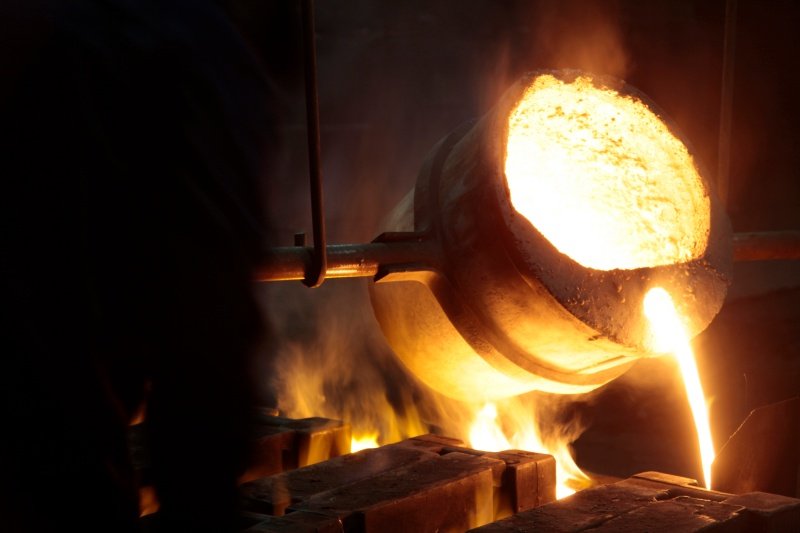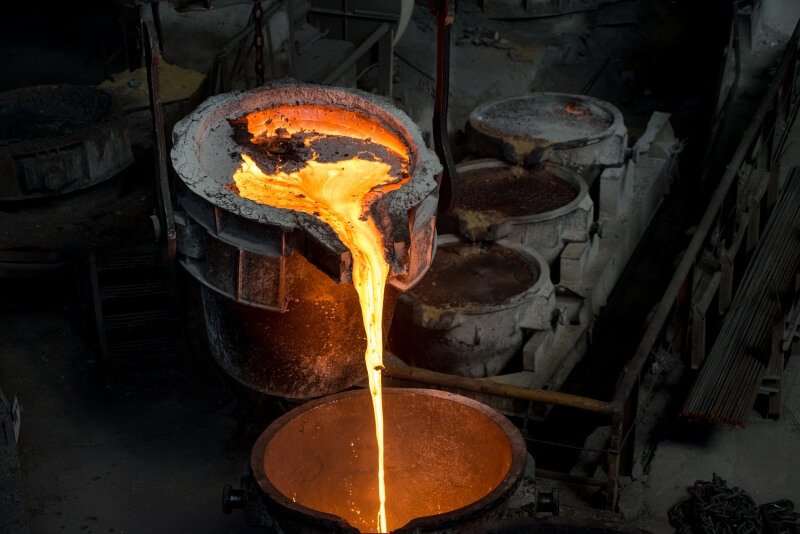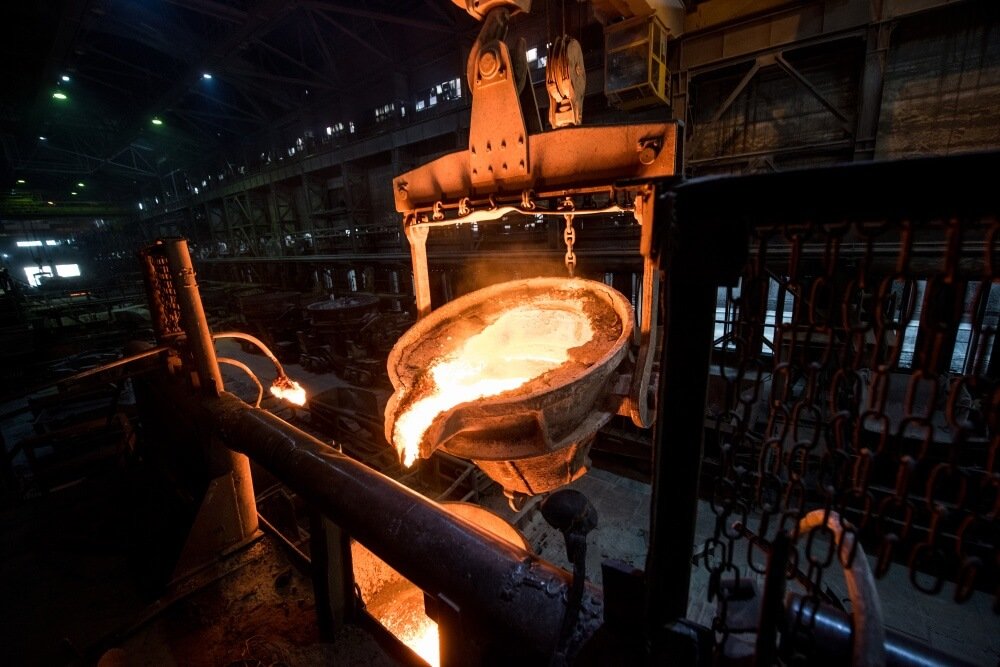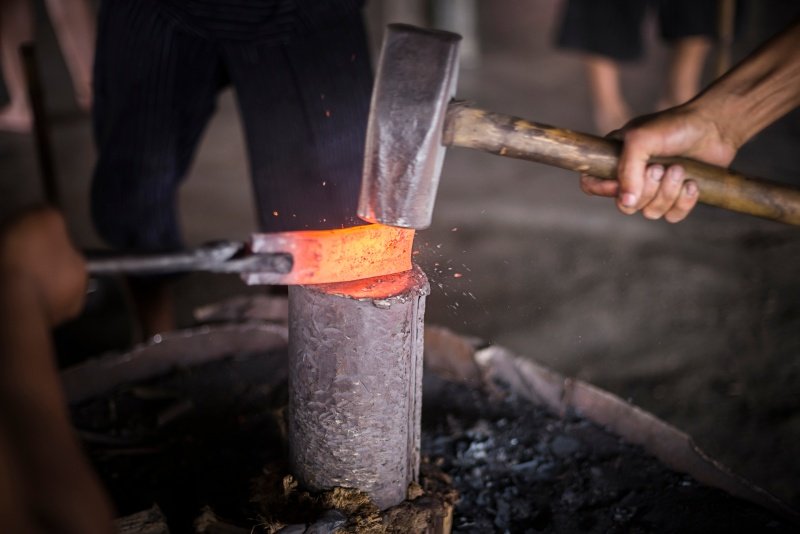Introduction to Wax Casting Aluminum
You want to create precise, custom aluminum parts, but traditional methods often feel too rigid or complex. Achieving intricate designs in aluminum can be frustrating, leaving you with results that don’t match your vision. This guide introduces a step-by-step process for wax casting aluminum, giving you the knowledge and confidence to produce highly detailed, professional-quality components that meet both artistic and industrial standards.

Key Uses for Wax Casting Aluminum
This section explains the versatility of wax casting aluminum, highlighting its application in various industries from automotive parts to fine art. You will see how its precision makes it ideal for complex geometries.
Why Choose Wax Casting Aluminum for Parts?
This method is perfect for producing objects with thin walls and fine details, making it a go-to for industries needing precision components. You might be wondering how this versatile technique applies to your project. Here’s the deal: its strength lies in capturing intricate shapes.
- Transportation parts
- Agricultural components
- Medical devices
What Makes Wax Casting Aluminum Unique?
Unlike other methods, the expendable wax model allows for one-of-a-kind castings that capture every nuance of your original design. What does this mean for you? It means unparalleled freedom for both industrial and artistic applications.
| Industry | Example Application |
|---|---|
| Automotive | Intricate engine components |
| Aerospace | Lightweight structural parts |
| Art & Jewelry | Detailed sculptures & custom pieces |
Understanding these applications helps you identify if this process fits your project’s specific needs.
Key Takeaway: The main point is that wax casting aluminum is an adaptable process suited for anything from mass-produced industrial parts to bespoke sculptures. Its strength lies in creating highly detailed, complex shapes that other methods can’t easily replicate.
Model Creation for Wax Casting Aluminum
This stage is where your design takes physical form, creating an exact replica of your final piece using specialized wax. Precision here is paramount, as the metal will fill the space this model creates.
What Tools Are Needed for Wax Models?
You will need a few key tools to shape your wax model effectively, and many artists repurpose dental tools for their fine points. It gets better. You can often start with a minimal, low-cost toolkit.
- Microcrystalline or paraffin wax
- Heat gun and texturing tools
- Soldering iron for joining wax pieces
How Do You Prepare the Wax Pattern?
When shaping the wax, you must account for metal shrinkage as it cools, and you’ll add wax rods called sprues for flow. What’s the real story? These preparations are non-negotiable for a successful casting.
| Component | Function |
|---|---|
| Wax Model | The sacrificial pattern for your object |
| Sprues | Channels for molten aluminum to flow through |
| Texturing Tools | Used to add fine details to the wax |
Mastering these components is fundamental to translating your design into a castable form.
Key Takeaway: The success of your final aluminum piece depends entirely on the quality of the wax model. A well-designed pattern with proper gating ensures a complete and accurate casting, minimizing defects and finishing work.
Mold Making for Wax Casting Aluminum
Once your wax model is complete, you will encase it in a refractory material called investment, which is strong enough to withstand the heat. This forms the negative cavity for your casting.
What is the Mold Investment Made Of?
The investment is typically a mix of plaster and silica, which you will combine with water to the consistency of heavy cream. But here’s the kicker. This simple slurry provides both support and high heat resistance.
- Plaster for structural support
- Silica for high-temperature resistance
- Water to create a mixable slurry
How Do You Invest the Wax Model?
You will mix the investment and pour it over your wax model inside a flask, often using a vacuum chamber to remove air bubbles. The bottom line is this. A bubble-free mold is crucial for a flawless surface.
| Step | Purpose |
|---|---|
| Mixing Investment | Create a heat-resistant slurry |
| Vacuuming | Remove air bubbles for a flawless mold surface |
| Curing | Allow the investment to harden completely |
Each step in mold creation directly impacts the surface quality and integrity of your final part.
Key Takeaway: A properly made mold is free of air bubbles and fully captures the detail of the wax model. This ensures a clean transfer of the design to the final aluminum casting, reducing the time spent on finishing.
Wax Removal in Wax Casting Aluminum
This is the “lost wax” step where the original model is eliminated by melting the wax out of the hardened investment mold. This leaves a hollow cavity that is an exact negative of your design.
How Do You Melt the Wax from the Mold?
The most common method is using a kiln to heat the mold slowly, but a microwave can work for smaller jobs. This is where it gets interesting. You can even collect the melted wax for reuse.
- Heat in a kiln for a controlled burnout
- Use a microwave for small, quick jobs
- Collect the melted wax for reuse
Why is a Slow Burnout Important?
A slow, controlled burnout prevents the investment mold from cracking due to thermal shock and ensures all residue is vaporized. You might be surprised. This careful heating also strengthens the mold for the pour.
| Method | Best For | Consideration |
|---|---|---|
| Kiln Burnout | All mold sizes, especially large ones | Slow, controlled temperature ramp |
| Microwave | Small jewelry-sized molds | Fast, but less control over curing |
Choosing the right burnout method balances speed with the need for mold integrity.
Key Takeaway: The goal of the burnout process is twofold: to remove the wax cleanly and to properly cure the mold for casting. A successful burnout leaves a perfect, empty cavity ready to receive molten aluminum without risk of mold failure.
Melting Process for Wax Casting Aluminum
Now you’ll prepare the aluminum alloy for pouring by heating the solid metal in a crucible until it becomes molten. Managing the temperature is critical for a successful pour.
What Gear is Needed to Melt Aluminum?
You will need a furnace or torch capable of reaching aluminum’s melting point, a crucible to hold the metal, and tongs for safe handling. But that’s not all. Proper safety gear is absolutely essential.
- Furnace or high-power torch
- Graphite or ceramic crucible
- Safety gear, including gloves and goggles
How Do You Melt the Aluminum Alloy?
Place your aluminum alloy into the crucible, heat it until it’s fully liquid, and then add flux to remove impurities. Think about this for a moment. This cleaning step is what separates a brittle cast from a strong one.
| Item | Function in Melting |
|---|---|
| Crucible | A container that holds the melting aluminum |
| Furnace/Torch | Provides the necessary heat |
| Flux | A cleaning agent to remove impurities |
Each piece of equipment plays a critical role in achieving a clean, viable melt.
Key Takeaway: Properly melting aluminum means reaching the right temperature and ensuring the metal is clean. Removing dross is non-negotiable for a strong, defect-free casting.
Pouring Molten Wax Casting Aluminum
This is the most dynamic step where you will carefully pour the molten aluminum from the crucible into the pre-heated investment mold. Speed, confidence, and safety are key.
What Are the Safety Rules for Pouring?
Safety is your top priority, so always wear natural fiber clothing, insulated gloves, and safety goggles when handling molten metal. Here’s a pro tip. Keeping a chemical fire extinguisher nearby is not optional.
- Work in a well-ventilated area
- Keep a chemical fire extinguisher nearby
- Ensure your path to the mold is clear
How Do You Pour the Aluminum?
Pour the molten aluminum into the mold’s sprue opening in a single, steady motion, avoiding any splashing. It’s simpler than you think. A confident pour prevents defects caused by turbulence.
| Action | Reason |
|---|---|
| Wear PPE | Protects from burns and fumes |
| Preheat Mold | Prevents cracking and ensures full metal flow |
| Pour Steadily | Avoids turbulence and trapped air bubbles |
Following these pouring protocols is crucial for both personal safety and casting success.
Key Takeaway: A successful pour is a safe and steady one. Preheating the mold and pouring confidently ensures the aluminum fills every detail before it begins to solidify, resulting in a complete casting.
Releasing Your Wax Casting Aluminum Part
Once the metal has fully cooled, it’s time to break open the mold in a step called devesting to reveal your new aluminum piece. This is often a messy but rewarding part of the process.
How Do You Break the Mold?
The easiest way to break away plaster investment is to quench the hot mold in a bucket of water, causing thermal shock. Ready for the good part? The plaster will crack and practically dissolve away.
- Submerge the hot mold in water
- The plaster will crack and dissolve
- Use brushes to scrub away residue
What if the Mold is Ceramic Shell?
If you used a harder ceramic shell mold, you’ll need more force like hammers or pneumatic chisels to chip it away carefully. Here’s what you need to know. This type of mold requires more effort to remove.
| Mold Type | Removal Method |
|---|---|
| Plaster Investment | Quenching in water |
| Ceramic Shell | Breaking with hammers/chisels |
The devesting method is dictated entirely by the type of investment material you used.
Key Takeaway: The goal of devesting is to cleanly separate the casting from the mold material without damaging the final piece. Quenching is effective for plaster, while ceramic shells require mechanical force.
Finishing Your Wax Casting Aluminum Piece
Your aluminum part is free, but it’s not done yet, as you now need to remove the sprues and polish the surface. This final stage transforms the rough casting into a finished product.
How Do You Remove Sprues and Gates?
You will cut off the sprues and gating system from the main casting using a hacksaw or an angle grinder with a cutting disc. Now for the final touch. A clean cut here makes polishing much easier.
- Use clippers for small jewelry pieces
- Use a hacksaw for medium-sized parts
- An angle grinder is best for large gates
How Do You Polish the Aluminum?
You will use files, sandpaper, and polishing compounds to smooth the surface, starting with coarse grits and moving to finer ones. It’s a simple three-step process. This methodical approach is what creates a professional shine.
| Finishing Stage | Tools |
|---|---|
| Gate Removal | Hacksaw, angle grinder |
| Surface Smoothing | Files, sandpaper |
| Polishing | Buffing wheel, polishing compounds |
Selecting the right tool for each finishing stage ensures an efficient and high-quality result.
Key Takeaway: Finishing is what gives your aluminum casting its professional look. Properly removing gates and methodically polishing the surface are critical steps that elevate the final piece from a rough cast to a work of art.
Learning More About Wax Casting Aluminum
This guide gives you the foundational knowledge to start, but hands-on experience is the best way to master wax casting aluminum. Taking a class provides access to professional equipment and expert guidance.
Where Can You Learn This Skill?
You can find classes at local art centers, community colleges, or specialized workshops that provide a safe and structured way to learn. Here’s your next step. Seek out a program with experienced instructors.
- Look for local foundry or jewelry departments
- Enroll in a beginner’s casting class
- Practice under professional supervision
Why Take a Class Instead of DIY?
Starting at home can be expensive and dangerous without proper training, whereas a class offers access to costly equipment while teaching safety. Let me be frank. Professional guidance is invaluable for this craft.
| Learning Path | Benefit |
|---|---|
| Take a Class | Safety, expert guidance, access to tools |
| Read Guides | Builds foundational knowledge |
| Watch Videos | Visual aid for specific techniques |
A blended learning approach combines theoretical knowledge with the indispensable value of hands-on practice.
Key Takeaway: While theory is useful, wax casting aluminum is a hands-on craft. The safest and most effective way to become proficient is to learn in a structured class environment where you can practice with expert supervision and the right tools.
Conclusion
You now have a complete roadmap for turning a wax model into a finished aluminum part. This process solves the problem of creating complex shapes with high precision. With this knowledge, you can approach your next project with confidence. Our vision is to empower creators like you with the skills to bring any design to life. If you’re ready to take the next step, contact us today for expert guidance and resources.
FAQ Section
Q1: Can I start wax casting aluminum at home? A: It’s best to start in a professional studio. The process requires expensive and potentially hazardous equipment like a kiln and furnace, and professional instruction ensures you learn safely.
Q2: What’s the best wax for casting aluminum? A: Microcrystalline wax is excellent for modeling because it is pliable and slightly sticky. Paraffin wax is harder and better used as an additive to firm up a model rather than for initial sculpting.
Q3: Is wax casting aluminum better than die casting? A: It depends on the goal. Wax casting is better for one-off or highly intricate artistic pieces because it uses an expendable mold. Die casting uses a durable metal mold and is better for mass-producing identical parts at high pressure.
Q4: How hot does the kiln get for wax casting aluminum? A: The kiln serves two purposes: melting the wax (around 200-300°F) and curing the investment mold. The mold is then heated to 1000-1200°F just before pouring to prevent the molten aluminum from cooling too quickly.
Q5: What safety gear is essential for wax casting aluminum? A: You must wear natural fiber clothing (like cotton or wool), leather boots, insulated gloves, and full-face protection or safety goggles. A well-ventilated space and a chemical fire extinguisher are also mandatory.




